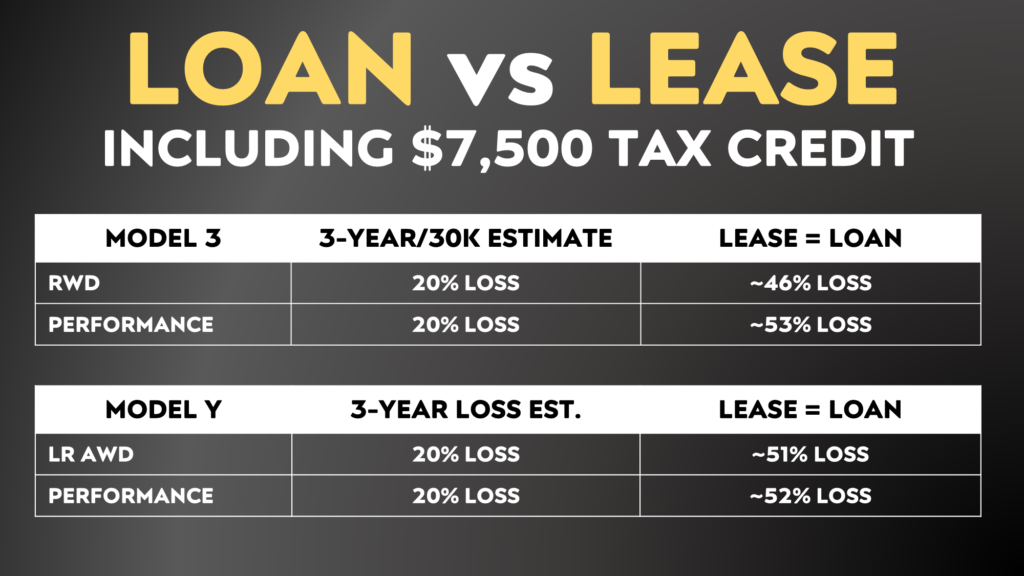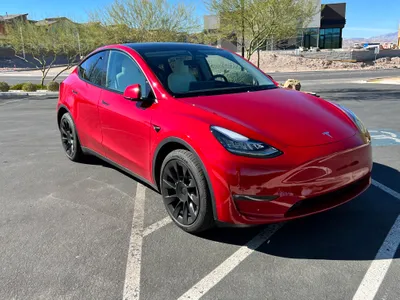Tesla Lease Deals $250 a Month
Leasing a Tesla for as little as $250 a month may sound too good to be true, but with the right information and timing, it is possible. In this guide, we break down everything you need to know to score the best Tesla leasing deals in 2024.
From key leasing details to understanding the options available, here’s how you can drive a Tesla without spending a fortune.
Tesla has recently introduced an attractive leasing offer that has caught the attention of many potential electric vehicle (EV) buyers.
For as little as $250 a month, you can lease a Tesla Model 3, making it more affordable than ever to drive one of the most popular electric cars on the market.

Understand the Tesla Lease Deals $250 a Month
The $250 per month lease is available for the rear-wheel drive (RWD) Tesla Model 3 with a two-year contract. This offer requires a $4,500 down payment and is calculated for an annual mileage of 10,000 miles.
Interestingly, the monthly payment increases to $329 if you opt for a three-year lease1. For those interested in the Model Y, the lease starts at $363 per month for a 24-month plan or $399 for a 36-month plan, also with a $4,500 down payment.
How to Find the Best Tesla Lease Deals for $250 a Month
Getting a $250-a-month Tesla lease requires good timing, negotiating, and knowing where to look. Here’s how to maximize your chances:
1. Explore regional promotions
Tesla occasionally offers regional promotions and incentives that can significantly reduce monthly lease payments. Look for local incentives or utility company discounts that can lower your cost.
2. Consider the Model 3
The Tesla Model 3 is the most affordable option, and leases for this model typically start at a lower price than other models. With its combination of range, performance, and price, the Model 3 is the ideal choice for those looking for an affordable lease.
3. Opt for a higher down payment
While paying $250 a month is possible, you may require a higher down payment. By increasing your down payment, you can reduce your monthly leasing costs.
4. Negotiate lease terms
Tesla lease terms are typically fixed, but there may be some flexibility if you rent through a third-party dealer. Be sure to ask about:
❌Mileage limitation: Standard leases include between 10,000 and 15,000 miles per year. If you opt for a lower mileage limit, you can lower your monthly payments.
❌Lease length: A longer lease term (36 to 48 months) can result in lower monthly payments.
5. Check out third-party leasing options
Tesla isn’t the only company offering lease deals on its vehicles. Third-party leasing companies may offer more competitive rates and flexible terms. Shop around to find the best deal for your needs.
Tesla Leasing vs. Buying
Leasing allows drivers to enjoy the benefits of a Tesla without the financial commitment of purchasing. Here’s a quick comparison:
| Leasing | Buying |
|---|---|
| ✅Lower monthly payments | ❌Higher monthly payments or upfront cost |
| ✅Ability to upgrade every few years | ❌Long-term ownership |
| ✅No worries about depreciation | ❌Vehicle loses value over time |
| ✅Mileage limitations | ❌Unlimited mileage |

Benefits of leasing a Tesla for $250 a month
Leasing a Tesla for $250 a month is a great option for drivers looking to take advantage of the brand’s cutting-edge technology without the high price tag. Some of the key benefits include:
✅Affordable entry into EVs: With leases as low as $250 a month, you can drive a premium EV without the high upfront cost of purchase.
✅Access to Tesla’s Supercharging Network: As a Tesla owner, you can take advantage of the world’s largest and fastest-growing network of EV chargers.
✅Low maintenance costs: EVs have fewer moving parts than traditional gas-powered cars, which means lower maintenance costs over the lease term.
✅Regular technology updates: Tesla frequently releases over-the-air updates that improve your vehicle’s software, adding new features and improving performance.
Understand the Lease Agreement of Tesla leases
Before signing a lease, it’s essential to understand the terms and conditions to avoid any unexpected surprises. Here are some key details to keep in mind:
1. Mileage Limitations
Most Tesla leases have a mileage limit, usually between 10,000 and 15,000 miles per year. If you exceed this limit, you’ll be charged for additional miles, usually at rates of $0.25 or more per mile.
2. Options at the end of the lease
At the end of your lease, you’ll have several options:
✔️Return the car: You can return the car to Tesla and walk away, though you may have to pay for excess wear and tear.
✔️Extend the lease: Some leases allow extensions, which can be a great option if you’re waiting for the release of a new Tesla model.
✔️Buy the car: While Tesla leases don’t always include a purchase option, in some cases, you can buy the car for its residual value at the end of the lease period.
3. Down payment and fees
Tesla leases often require a down payment, which can range from $2,000 to $5,000. Be sure to factor this cost into your overall leasing budget.
4. Insurance Requirements
Because Tesla vehicles are equipped with advanced technology and come with a high price tag, insurance can be more expensive than a traditional gas-powered vehicle. Be sure to get insurance quotes before finalizing your lease.
Tesla Lease Payment Breakdown
Here’s a breakdown of what a typical Tesla lease payment might look like for a $250 per month deal:
🚗Vehicle Model: Tesla Model 3 Standard Range Plus
🕐Lease Term: 36 Months
💲Down Payment: $5,000
👉Annual Mileage Allowance: 10,000 Miles
💸Monthly Payment: $250
💰Residual Value at Lease End: $22,000

This example assumes a standard lease deal, but your actual terms may vary by dealer and available promotions.
Bottom Line
Tesla’s $250 per month lease deal for the Model 3 is a game-changer that makes electric vehicles more accessible to a wider audience. Given the affordability, flexibility and environmental benefits of driving an electric vehicle, this is a deal that is hard to pass up.
However, prospective renters should be aware of the terms and conditions to ensure it fits their needs and expectations.
- Housing Assistance for Single Fathers - June 3, 2025
- Free Scooters for Seniors – Get a Mobility Scooters - June 2, 2025
- Broad Horizons Scholarship for High School Juniors - May 28, 2025
